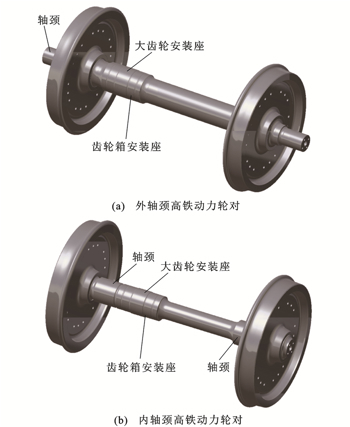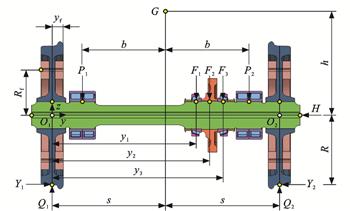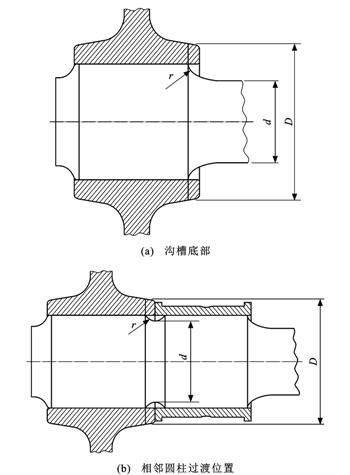| 内轴颈高铁车轴结构设计与强度分析方法 |
| |
| 引用本文: | 郭峰, 吴圣川, 冯洋, 刘建新, 梁树林, 尹振坤. 内轴颈高铁车轴结构设计与强度分析方法[J]. 交通运输工程学报, 2021, 21(5): 138-148. doi: 10.19818/j.cnki.1671-1637.2021.05.012 |
| |
| 作者姓名: | 郭峰 吴圣川 冯洋 刘建新 梁树林 尹振坤 |
| |
| 作者单位: | 1.西南交通大学 牵引动力国家重点实验室, 四川 成都 610031;;2.中车长春轨道客车股份有限公司国家轨道客车工程研究中心, 吉林 长春 130062 |
| |
| 基金项目: | 国家自然科学基金项目52072321中国铁路总公司科技研究开发计划课题P2018J003牵引动力国家重点实验室开放课题2019TPL-Q05牵引动力国家重点实验室开放课题2021TPL-T04牵引动力国家重点实验室开放课题2021TPL-T06 |
| |
| 摘 要: | 
针对高速列车的轻量化设计需求,分析了内轴颈高铁车轴独特的内支承结构与承载特点,建立了内轴颈高铁车轴受力状态和结构强度理论分析模型,提出了内轴颈高铁车轴设计极限载荷和疲劳强度的解析计算方法;在此基础上,制定了基于理论分析、有限元方法和车辆系统动力学的内轴颈高铁车轴结构设计方法,并以17 t轴重的内轴颈高铁车轴为例开展了应用研究;基于内轴颈高铁车轴受力状态的理论分析结果,确定了车轴的临界安全截面和详细尺寸方案;建立了内轴颈高铁车轴的有限元模型,评估并校核了车轴的疲劳强度;建立了轴箱内置式高速动车的刚-柔耦合系统动力学仿真分析模型,验证了车辆的动力学性能和车轴的动荷载。分析结果表明:17 t轴重的新型内轴颈高铁车轴的质量为273.6 kg,比同轴重传统外轴颈高铁车轴的质量低约30%;内轴颈高铁车轴各截面疲劳强度的安全系数均大于1.66,临界安全截面转移至轴颈与轮座之间的卸荷槽及轴颈与轴身之间的过渡圆弧区域;采用内轴颈车轴的高速动车能够以350 km·h-1的速度稳定通过半径为5.5 km的曲线线路,主要动力学性能指标优良;在选定曲线通过工况下车轴所承受的动载荷均能被设计极限载荷包络,据此开展的车轴结构设计和强度分析是稳健的。
可见,内轴颈高铁车轴在实现高速列车轻量化设计方面有显著的技术优势,且高速适应性较好,在高速列车领域的发展和应用潜力巨大。

|
| 关 键 词: | 车辆工程 高速列车 内轴颈高铁车轴 车辆动力学 设计极限载荷 轻量化设计 疲劳强度 |
| 收稿时间: | 2021-03-29 |
| 本文献已被 万方数据 等数据库收录! |
| 点击此处可从《交通运输工程学报》浏览原始摘要信息 |
|
点击此处可从《交通运输工程学报》下载全文 |
|



